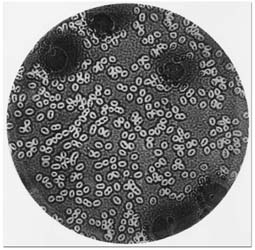![]()
![]()
Micrococcus pasteuri, an organism causing bacterial pneumonia. George M. Sternberg, MD, one of the first bacteriologists in America, did seminal work in establishing pneumococcus as the cause of bacterial pneumonia around the same time Louis Pasteur did. He first isolated the organism while spending time in the laboratory of Penn pathologist Henry Formad, MD (M 1877), as a visiting professor in January 1881. Sternberg described his work here in letters to Johns Hopkins colleague John Shaw Billings, MD, and published his findings in April 1881. (George M. Sternberg, A Fatal Report of Septicaemia in the Rabbit Produced by the Subcutaneous Injection of Human Saliva, 1881)

Most 19th-century "microbiologists" focused on bacteriology and parasitology, working in the pathology departments of medical institutions. Penn’s first professor of pathology and morbid anatomy, James Tyson, MD (M1863), introduced bacteriology to medical students in the 1870s. During that same decade, modest laboratories for clinical testing were built into the Hospital of the University of Pennsylvania, the nation's first hospital specifically built to advance medical education. Following Koch’s announcement of the discovery of the tubercle bacillus, Juan Guiteras, MD, PhD (M 1873), Tyson’s successor, went abroad to study and select apparatus for a “modern” bacteriology lab. Upon his return, he started a formal course in bacteriology in 1891-92. Guiteras’ course soon was absorbed into the Laboratory of Hygiene, established on the Penn campus in 1892. But Guiteras, an expert in tropical diseases, went on to expose the concept of the mosquito transmission of yellow fever, assisting in its verification during the Spanish-American War.